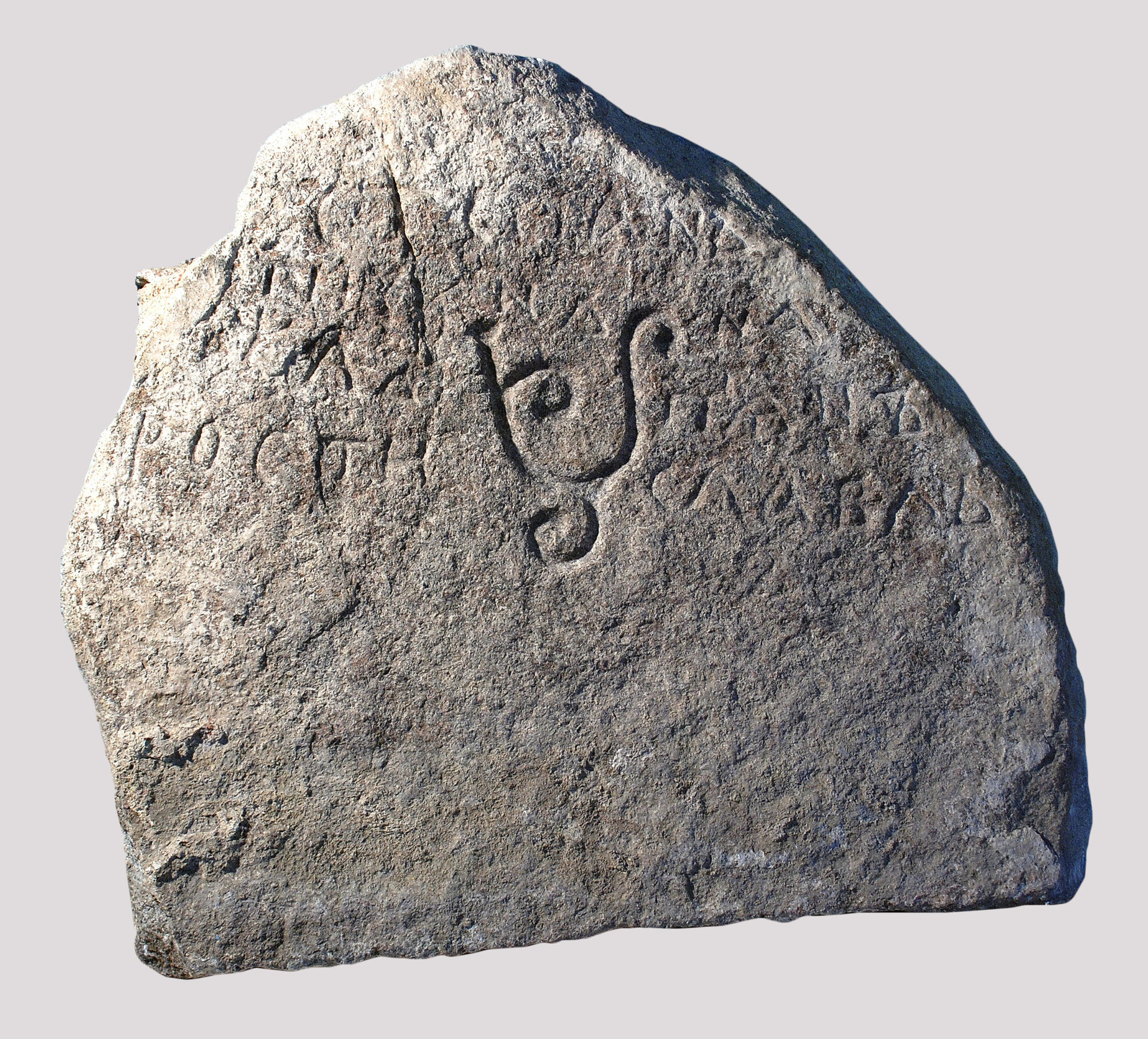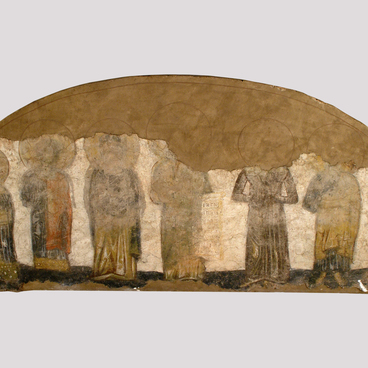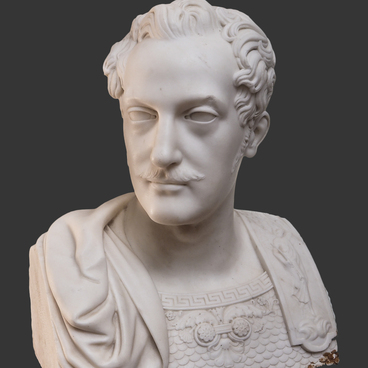The Cathedral of the Trinity Monastery on Klovka is a monument of ancient Russian architecture of the pre-Mongol period. The Leningrad archaeologists Voronin and Rappoport, during excavations, dated the cathedral to the end of the 12th — the beginning of the 13th centuries.
During excavations in 1997, a large granite stone with the possessory sign was found in the foundation of the southern wall of the building. In its central part there was a carved sign belonging to the proprietary signs of the ancient Russian princes of Rurikovich. The signs of the Rurikovich, unlike the later heraldic blazon, did not belong to the entire family, but were personal — each prince had his own. Above, to the left and to the right of the sign, there is an inscription, which can be deciphered as follows: ‘The princely steward Stepan put the sign of Prince Rostislav.’ Such ‘princely stewards’ were called ‘tiuns’ and were important confidants and servants of the princes.
In the XII century, Prince Rostislav Mstislavich ruled in Smolensk, leaving a large footprint on the sands of time. Rostislav Mstislavich is the grandson of Prince Vladimir Monomakh and the great-great-grandson of Yaroslav the Wise. Rostislav was born presumably at the beginning of the 12th century. Around 1127 he became prince of Smolensk. Rostislav ‘build the great city of Smolensk’: in 1135 he erected a timber-earth fortress about 3.5 kilometers long. On the initiative of the prince, the Smolensk diocese was established in 1136, headed by Bishop Manuel. Under Rostislav, active stone construction was carried out. For example, the Church of Peter and Paul was built. The prince became the founder of the Rostislavich princely dynasty of Smolensk, which dominated the region until the beginning of the 15th century.
The stone with Rostislav’s sigil had a utilitarian meaning: it served as a sign on the border of the prince’s personal lands. In 1159 Rostislav Mstislavich inthroned in Kiev, and in 1167 the prince died. Thus, the stone with the sign has lost its relevance. In a later era, new use for it was found — as a building material for the complex of buildings of the Trinity Cathedral. Rostislav Mstislavich is canonized by the Russian Orthodox Church as a faithful.
In 1997, the stone with the owner’s sign was transferred to the Smolensk State Museum-Reserve.
During excavations in 1997, a large granite stone with the possessory sign was found in the foundation of the southern wall of the building. In its central part there was a carved sign belonging to the proprietary signs of the ancient Russian princes of Rurikovich. The signs of the Rurikovich, unlike the later heraldic blazon, did not belong to the entire family, but were personal — each prince had his own. Above, to the left and to the right of the sign, there is an inscription, which can be deciphered as follows: ‘The princely steward Stepan put the sign of Prince Rostislav.’ Such ‘princely stewards’ were called ‘tiuns’ and were important confidants and servants of the princes.
In the XII century, Prince Rostislav Mstislavich ruled in Smolensk, leaving a large footprint on the sands of time. Rostislav Mstislavich is the grandson of Prince Vladimir Monomakh and the great-great-grandson of Yaroslav the Wise. Rostislav was born presumably at the beginning of the 12th century. Around 1127 he became prince of Smolensk. Rostislav ‘build the great city of Smolensk’: in 1135 he erected a timber-earth fortress about 3.5 kilometers long. On the initiative of the prince, the Smolensk diocese was established in 1136, headed by Bishop Manuel. Under Rostislav, active stone construction was carried out. For example, the Church of Peter and Paul was built. The prince became the founder of the Rostislavich princely dynasty of Smolensk, which dominated the region until the beginning of the 15th century.
The stone with Rostislav’s sigil had a utilitarian meaning: it served as a sign on the border of the prince’s personal lands. In 1159 Rostislav Mstislavich inthroned in Kiev, and in 1167 the prince died. Thus, the stone with the sign has lost its relevance. In a later era, new use for it was found — as a building material for the complex of buildings of the Trinity Cathedral. Rostislav Mstislavich is canonized by the Russian Orthodox Church as a faithful.
In 1997, the stone with the owner’s sign was transferred to the Smolensk State Museum-Reserve.



